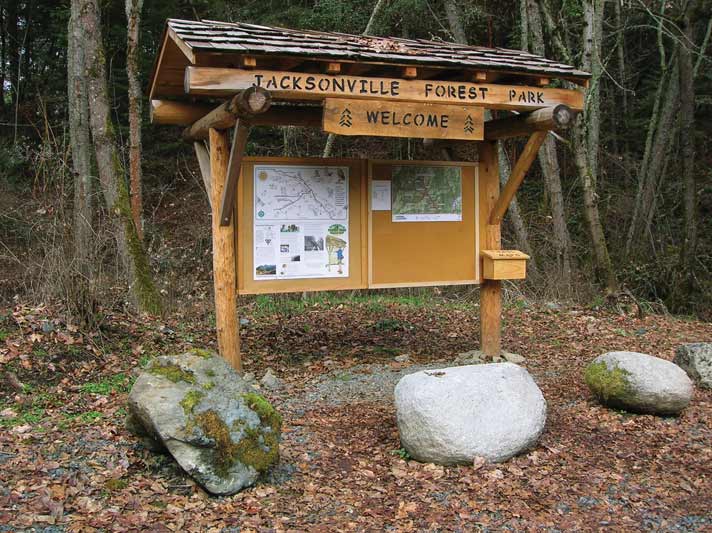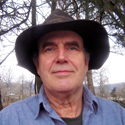Trail Talk – February 2023
After multiple articles for the Jacksonville Review and other publications regarding the “Trails Community,” we feel this is an appropriate time to catch our collective breath. The last decade has seen a substantial increase in the local trail availability, with a healthy increase in both hiking and mountain biking opportunities.
The Ashland Trails, mostly situated on Forest Service Land, have had a number of the original multi-use trails differentiated for mountain bike use and additional hiking trails added to avoid conflict. Our local Bureau of Land Management (BLM) has provided improved multi-use opportunities at Cathedral Hills near Grants Pass, Jack-Ash and Applegate Ridge Trails, along with the historic Sterling Ditch Trail in the Applegate area, and a dedicated mountain biking system at Mountain of the Rogue near Rogue River. Medford has enlarged the Prescott Park system on Roxy Ann, adding additional mountain biking availability.
In Jacksonville, while the Jacksonville Woodlands trails have remained static (and extremely popular) at about 12 miles, a new, accurate trails map and brochure has been published. Forest Park has seen the addition of new trails, though a large number of them simply connect the original trails and ditches of our mining history with former off-road recreation routes. (OHVs are no longer allowed in the city park). Remediation there has centered on re-vegetation of highly-eroded areas, with well over a thousand native trees and shrubs added to heavily damaged hillsides. Additional improvements have addressed dangerous trail conditions and a City Council approved speed limit of 10 miles per hour has been adopted for the park.
A large portion of recent trail improvement has been carried out by a dedicated group of volunteers who work under the supervision of the Public Works Department. You’ll recognize these gentlemen, all retirees from a variety of occupations ranging from mineral exploration and vegetation management, through nursing, teaching, and banking, out and about with picks, mattocks, and McLeods. All are enthusiastic trail users who have multiple years and experiences hiking, running, backpacking, and mountain bike riding throughout the Western US.
Additional work crews in both the Woodlands and Forest Park, including community members, Boy Scouts, and school groups, have provided muscle and expertise in the construction of bridges, walkways, shelters, and kiosks. These trail systems are truly community resources in every sense of that expression. Built and maintained by community members, the very notion of so many miles of easily-attainable recreational opportunies in a town of so small a population is remarkable. (The fact that Jacksonville’s park system acreage exceeds the acreage of the town itself seems contradictory.) It’s no wonder that visitors come from across the region on a regular basis to use these trails. Folks from other states and even international tourists are often encountered enjoying this resource when they visit the area.
Each new year we resolve self-improvement. What if we resolved to explore our local trails? What if we resolved to see how many different flowering plants are there? Birds? Native trees? Happy New Year and Happy Trails.

 Trail Talk is a monthly column by Clayton Gillette about hiking the Jacksonville Woodlands trail system. For more information, please visit the Jacksonville Woodlands Association website at
Trail Talk is a monthly column by Clayton Gillette about hiking the Jacksonville Woodlands trail system. For more information, please visit the Jacksonville Woodlands Association website at